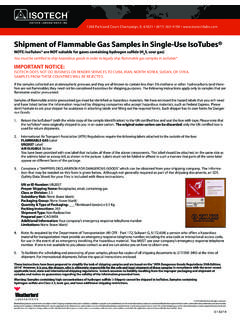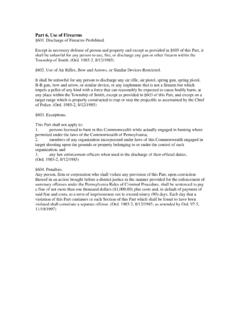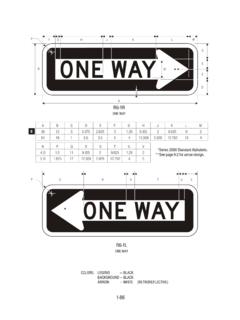Transcription of 2. QUALITATIVE AND QUANTITATIVE …
1 NEW ZEALAND DATASHEET cialis DS vA11_15 FEB2018 Supersedes v10_20 Jan16 Page 1 of 21 1. cialis cialis mg film-coated tablets* cialis 5 mg film-coated tablets cialis 10 mg film-coated tablets cialis 20 mg film-coated tablets * Not available 2. QUALITATIVE AND QUANTITATIVE COMPOSITION Each tablet contains mg, 5 mg, 10 mg or 20 mg tadalafil as the active ingredient. Excipient with known effect: cialis tablets contain lactose (as monohydrate). For the full list of excipients, see section 3. PHARMACEUTICAL FORM mg: light orange-yellow, almond-shaped, film-coated tablet marked with C 2 on one side. 5 mg: light yellow, almond-shaped, film-coated tablet marked with C 5 on one side. 10 mg: light yellow, almond-shaped, film-coated tablet marked with C 10 on one side. 20 mg: yellow, almond-shaped, film-coated tablet marked with C 20 on one side. 4. CLINICAL PARTICULARS Therapeutic indications cialis is indicated for the treatment of: erectile dysfunction (ED) in adult men.
2 In order for cialis to be effective in treating ED, sexual stimulation is required. moderate to severe lower urinary tract symptoms (LUTS) associated with benign prostatic hyperplasia (BPH) in adult men adult men with co-existing ED and LUTS associated with BPH Dose and method of administration cialis tablets are for oral use. cialis can be taken with or without food. For erectile dysfunction in adult men - On-Demand dosing The maximum recommended dose of cialis is 20 mg, taken prior to anticipated sexual activity. The maximum recommended dosing frequency is once per day. cialis may be taken between 30 minutes and 36 hours prior to anticipated sexual activity. Patients may initiate sexual activity at varying time points relative to dosing in order to determine their own optimal window of responsiveness. The dose may be lowered to 10 mg based on individual response and tolerability. cialis may be taken cialis DS vA11_15 FEB2018 Supersedes v10_20 Jan16 Page 2 of 21 without regard to food.
3 cialis 10 and 20 mg is intended for use prior to anticipated sexual activity and is not for continuous daily use. For erectile dysfunction in adult men - Once-a-Day dosing In patients who anticipate a frequent use of cialis ( at least twice weekly), a once daily regimen with the lowest dose of cialis might be considered suitable, based on patient choice and the physician s judgement. In these patients the recommended dose is 5 mg taken once a day at approximately the same time of day. The dose must not exceed 5 mg daily. The dose may be decreased to mg once a day based on individual tolerability. There is insufficient evidence on the maximum duration of treatment. The appropriateness of continued use of the once-a-day regimen should be reassessed periodically. Benign prostatic hyperplasia in adult men The recommended dose is 5 mg, taken at approximately the same time every day. Doses above 5 mg once-a-day are not recommended. Benign prostatic hyperplasia and erectile dysfunction in adult men The recommended dose is 5 mg taken at approximately the same time every day.
4 Doses above 5 mg once-a-day are not recommended. Use in men with renal impairment For on-demand dosing for erectile dysfunction, the recommended dose of cialis is 10 mg taken prior to anticipated sexual activity and without regard to food for patients with mild (creatinine clearance 51 to 80 mL/min) or moderate (creatinine clearance 31 to 50 mL/min) renal impairment. Based on efficacy and tolerability the dose may be increased up to 20 mg. For patients with severe (creatinine clearance 30 mL/min), renal impairment 10 mg is the maximum recommended dose. A single dose study in 8 men suffering from End Stage Renal Disease who were stable on haemodialysis showed 3 4 fold increase in AUC and 2 - fold increase in Cmax in tadalafil levels. The half life of the drug is also prolonged. For once-a-day dosing for erectile dysfunction and/or benign prostatic hyperplasia, dosage adjustments are not required in patients with mild (creatinine clearance 51 to 80 mL/min) or moderate (creatinine clearance 31 to 50 mL/min) renal impairment.
5 Once-a-day dosing of tadalafil is not recommended in patients with severe (creatinine clearance 30 mL/min) renal impairment. Use in men with hepatic impairment For on-demand dosing for erectile dysfunction, the recommended dose of cialis is 10 mg taken prior to anticipated sexual activity with or without food for patients with mild to moderate hepatic impairment (Child-Pugh Class A or B). There are no available data about the administration of doses higher than 10 mg of tadalafil to patients with hepatic impairment. There is limited clinical data on the safety of cialis in patients with severe hepatic impairment (Child-Pugh Class C); if prescribed, a careful individual benefit/risk evaluation should be undertaken by the prescribing physician (see section Pharmacokinetic properties - Characteristics in specific groups of patients: Hepatic impairment). cialis DS vA11_15 FEB2018 Supersedes v10_20 Jan16 Page 3 of 21 Once-a-day dosing has not been evaluated in patients with hepatic impairment therefore, if prescribed for erectile dysfunction and/or benign prostatic hyperplasia, a careful individual benefit/risk evaluation should be undertaken by the prescribing physician (see section Pharmacokinetic properties - Characteristics in specific groups of patients: Hepatic impairment).
6 Use in men with diabetes The presence of diabetes does not require a dose reduction. Use in elderly men Dosage adjustments are not required in elderly patients. Dosage recommendations described in Use in Adult Men above apply to elderly men. Use in children cialis should not be used in individuals below 18 years of age. Contraindications Nitrates and tadalafil must not be used concomitantly. Co-administration of tadalafil with nitric oxide donors, organic nitrates or organic nitrites in any form either regularly or intermittently is contraindicated. Drugs which must not be used concomitantly include, but are not limited to, glyceryl trinitrate (injection, tablets, sprays or patches), isosorbide salts, sodium nitroprusside, amyl nitrite, nicorandil, or organic nitrates in any form. In clinical studies, tadalafil (10 mg) was shown to augment the hypotensive effects of nitrates. This is thought to result from the combined effects of nitrates and tadalafil on the nitric oxide/cGMP pathway.
7 cialis should not be used in patients with a known hypersensitivity to tadalafil or to any of the excipients. Agents for the treatment of erectile dysfunction, including cialis , must not be used in men with cardiac disease for whom sexual activity is inadvisable. Physicians should consider the potential cardiac risk of sexual activity in patients with pre-existing cardiovascular disease. The following groups of patients with cardiovascular disease were not included in clinical trials and the use of tadalafil is therefore contraindicated: - patients with myocardial infarction within the last 90 days, - patients with unstable angina or angina occurring during sexual intercourse, - patients with New York Heart Association Class 2 or greater heart failure in the last 6 months, - patients with uncontrolled arrhythmias, hypotension (< 90/50 mmHg), or uncontrolled hypertension, - patients with a stroke within the last 6 months. Tadalafil is contraindicated in patients who have loss of vision in one eye because of non-arteritic anterior ischaemic optic neuropathy (NAION), regardless of whether this episode was in connection or not with previous PDE5 inhibitor exposure (see section Special warnings and precautions for use and section Undesirable effects - Adverse events identified from spontaneous post marketing surveillance).
8 cialis DS vA11_15 FEB2018 Supersedes v10_20 Jan16 Page 4 of 21 The combination of tadalafil and guanylate cyclase stimulators, such as riociguat, is contraindicated because it may lead to symptomatic hypotension. Special warnings and precautions for use Serious cardiovascular events, including myocardial infarction, sudden cardiac death, unstable angina pectoris, ventricular arrhythmia, stroke, transient ischemic attacks, chest pain, palpitations and tachycardia, have been reported either post marketing and/or in clinical trials. Most of the patients in whom these events have been reported had pre-existing cardiovascular risk factors. However, it is not possible to definitively determine whether these events are related directly to these risk factors, to cialis , to sexual activity, or to a combination of these or other factors. Caution should be exercised when prescribing cialis to patients with severe hepatic insufficiency (Child-Pugh Class C) or to those taking CYP3A4 inhibitors or inducers or HIV protease inhibitors.
9 Once-a-day administration either for the treatment of erectile dysfunction or benign prostatic hyperplasia has not been evaluated extensively in patients with hepatic insufficiency. If tadalafil is prescribed, a careful individual benefit/risk evaluation should be undertaken by the prescribing physician. In a clinical pharmacology study, administration of tadalafil 10 mg to patients with moderate renal failure (creatinine clearance = 31 to 50 mL/min) was determined to be safe but appeared to be less well tolerated in terms of back pain than in patients with mild renal failure (creatinine clearance = 51 to 80 mL/min) and in healthy subjects. In a single dose, pharmacodynamic study of 8 patients with End Stage Renal Disease who were stable on haemodialysis, the reported adverse effects included headache, dizziness, and somnolence. Tadalafil should be prescribed with caution for patients with creatinine clearance < 50 mL/min. Due to increased tadalafil exposure (AUC), limited clinical experience, and the lack of ability to influence clearance by dialysis, once-a-day dosing of tadalafil is not recommended in patients with severe renal impairment.
10 For dosage recommendations in patients with renal impairment, see section Dose and method of administration. Priapism has been reported with PDE5 inhibitors, including tadalafil. Patients who experience erections lasting 4 hours or more should be instructed to seek immediate medical assistance. If priapism is not treated immediately, penile tissue damage and permanent loss of potency may result. cialis should be used with caution in patients who have conditions that might predispose them to priapism (such as sickle cell anaemia, multiple myeloma, or leukaemia), or in patients with anatomical deformation of the penis (such as angulation, cavernosal fibrosis or Peyronie s disease). The evaluation of erectile dysfunction should include a determination of potential underlying causes and the identification of appropriate treatment following an appropriate medical assessment. Prior to initiating treatment with tadalafil for benign prostatic hyperplasia patients should be examined to rule out the presence of carcinoma of the prostate.















